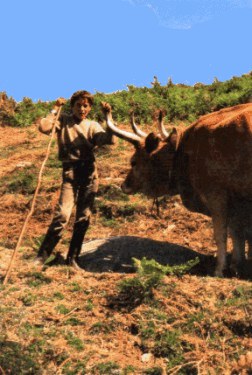|
|
|
||||
 |
 |
 |
 |
 |
 |
| pousadas | manor houses | villas | hotels | paradores | hotels in spain |
|
|
|
||||
 |
 |
 |
 |
 |
 |
| pousadas | manor houses | villas | hotels | paradores | hotels in spain |
Northern Portugal: Car Tours and Walks
Paul Burton and Denise BurtonText provided by Sunflower Books
The car tours and walks in this book explore north-western Portugal - arguably the most beautiful part of the country. Here, in the province of Minho, the lush greenness of the coastal lowlands, the Costa Verde, contrasts sharply with the mountainous interior - one of Europe's last wilderness areas. While emphasising excursions in the country's only national park, the Peneda-Gerês, the book also describes more gregarious pursuits - visiting local markets, sampling vintages at the Port wine lodges, and cruising on the river Douro. Northern Portugal - or more specifically, north-western Portugal, is arguably the most beautiful part of the country. Here, in the province of Minho, the lush greenness of the coastal area, the Costa Verde, contrasts sharply with the exciting but stark and wild interior of the Peneda-Geres National Park. The very name Costa Verde ('Green Coast') is evocative - conjuring up images of a verdant landscape, and it does not disappoint. The vines for the famous vinho verde grow tall by the road, in the fields, in the mountains, up trees, up trellises, over pergolas, walkways and village streets - everywhere. Their fresh green leaves bring a vibrancy and texture to the countryside, which is stunning in its effect. Highly visible as they are, the vines merely reflect the high fertility of this granite region, and colourful meadows teeming with wild flowers vie with the grape for the visitor's attention. In total contrast, inland Minho offers scenery of a mountainous nature and harbours the country's only national park, the Peneda-Gerês. Scenically beautiful and wild, where eagles soar and where wolves and wild boar still roam, it's one of Europe's last wildernesses. Sadly, the populations of these wild animals are now so diminished, especially the wolves, that they require protection.

If you explore with us, we can set your feet wandering over the hills into breathtaking scenic beauty. History still lives here, too, written millennia ago in the permanence of granite. Our walks follow some of the delightful old trails, built from huge granite slabs, which lead high into the mountains. You can only marvel at the effort and energy invested in their building, and wonder about the people who once lived in these mountains. Many people in the Minho still live in isolated villages only recently connected to the modern road system, and some are still only accessible by foot; these villages are a delight to visit. It is like going back in time. The villagers vigorously pursue farming techniques developed four centuries ago and still largely unchanged. Long horned oxen are central to the village economy - not just in the mountains, but also throughout the region. They are used both as beasts of burden and for food production. You may see them pulling ploughs in the field or the specially designed carts along the road, often mingling with the traffic.Area covered: from the northern coast south as far as Porto and east to the Spanish border.
The best months for walking: A walking holiday in northern Portugal is not recommended before April. Not that April is a settled month - you can expect anything from warm sunny days to showers, days of rain or even occasional cold, biting winds - but usually April offers plenty of walking opportunities. The weather settles more in May, when it starts to get hotter, but occasional rain may still be encountered - especially late in the afternoon in the mountains. June sees the temperature rising steadily, until it becomes too hot to walk - almost certainly by the second half of the month. The summer heat starts to fade sometime in September, and walking opportunities return again, lasting throughout October - but now with an increasing risk of rainy days.
Where to stay: If you want to stay by the sea, there is no more interesting place than Viana do Castelo. From here you can do all the walks in the book, provided that you have a car and are prepared to drive significant distances each day. There are also excellent places inland, along the river Lima, which are situated closer to the main walking area. About 25km along the Lima Valley lies Ponte de Lima, a town of considerable character which offers limited hotel accommodation but has many 'Turismo de Habitação' establishments in the vicinity (manor houses etc.). Even further inland lie Ponte da Barca (42km) and Arcos de Valdevez (48km), both smaller than Ponte de Lima, but of even greater charm. Both offer tourist accommodation and are well situated for access to the walks.
4 car tours - 68 long and short walks - 20 picnic suggestions - 136 pages + touring map
The author has a chapter called Recommended Books, it mentions the following:
Cadagon Guide
The Independent Travellers Guide (Collins)
The Rough Guide
Insite Guide
The Portuguese - The Land and its People
The wines and vineyards of Portugal
Return to manorhouses.com